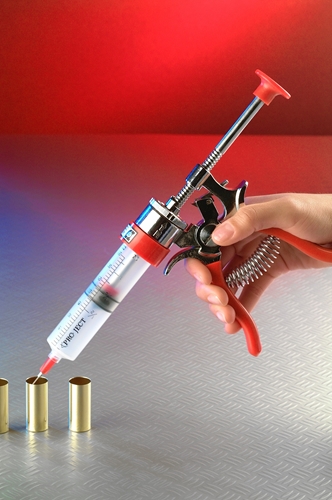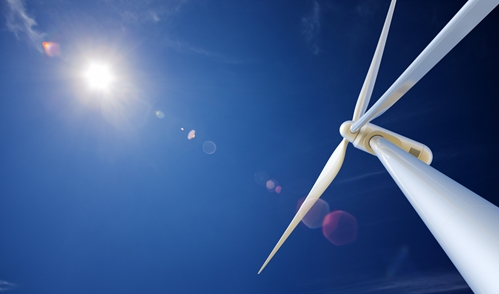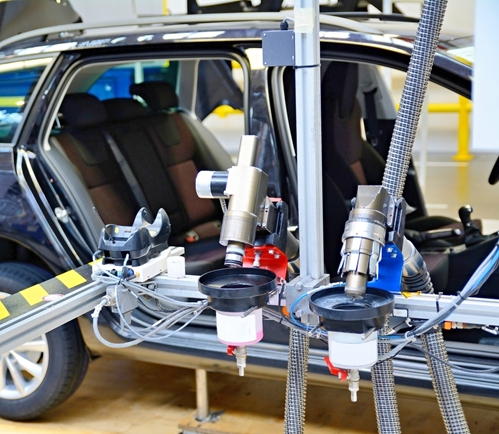

- Contributions by industrial experts with engineers in mind
- Focused on specialty-chemical material applications and selection
Knowledge Center
Silicones in the Photovoltaic Solar Industry

Silicone Adhesives for the Solar Industry
Silicone adhesives for the solar industry play a major role in modern photovoltaic (PV) construction because they provide lighter, cheaper, longer-term alternatives to mechanical fasteners.
The solar industry has experienced an enormous boom in the past decade, thanks to advances in technology and financial incentives. Part of that boom is due to enormous reduction in the cost of panels. This cost reduction has come from advances in technology, but also modern methods of construction and installation. Adhesives have played a major role in modern photovoltaic (PV) construction because they provide lighter, cheaper, longer-term alternatives to mechanical fasteners and can meet the unique challenges of the solar field. Silicone adhesives in particular provide the utility for precise bonding in various solar applications, as well as the durability to withstand harsh outdoor installations.
What are silicone adhesives?
Silicone adhesives are polymers based on a silicon-oxygen chemistry and generally cure to a rubber-like solid. They can come in one- or two- part formulations. One-part formulations cure via room-temperature vulcanization (RTV) using moisture in the air and generally take 24 hours or longer to cure. The length of cure time increases with thickness, and particularly deep sections usually use a two-part formulation. Two-part formulations use a catalyst that allows curing in unlimited depth, usually in under 24 hours. Meter-mix equipment is used to combine parts, making two-part formulations somewhat more difficult to apply. Silicone adhesives are versatile in their cured form and can range in color from opaque black to optically clear. They can cure to soft, rubbery materials or relatively hard resins. They have naturally excellent dielectric strength, but fillers can be added to make them electrically or thermally conductive.
Advantages of Silicone Adhesives
Silicones adhesives have a number of advantages over conventional adhesives, which have led to their usage across the solar industry. They are prized for their excellent resistance to both heat and cold - retaining their properties between -75C and 200C and standing up well to thermal cycling. This allows them to be used in all types of climates worldwide. Additionally, they are resistant to moisture, and can be used as a sealant in all types of exposed outdoor conditions including rain and snow. They are also resistant to UV degradation, maintaining their optical and physical properties even over extended exposure. Physical durability is another feature of silicones - their rubbery form insulates components from physical shock and does not crack or degrade over time. All of these properties make silicone adhesives an excellent fit for the varied and demanding elements that solar installations are often subject to.
How does the solar industry use silicone adhesives?
There are a number of applications in the solar industry where silicone adhesives are used from panel construction to installation.
Frame and Rail Bonding
Because of their excellent resistance to outdoor elements, and strong bonds to metal and other PV materials, silicone adhesives make a natural choice for installing cells into frames and arrays. Their resistance to physical stresses allows for easier installation and long-term durability. One-part formulations are usually used in frame bonding applications for ease of use.
Junction Boxes
Silicones can be used both to pot and encapsulate electronics within junction boxes and bond them to assemblies. Silicone's resistance to moisture and other elements, as well as dielectric strength, makes an excellent fit for protecting internal parts. Resistance to external elements allows them to be used for long-term outdoor bonding. Two-part formulations are often used for potting, while one-part formulations are used for bonding.
PV Cell Construction
Silicones make an excellent encapsulant in PV cell construction. Optically clear formulations allow excellent light transmission, and resistance to UV prevents yellowing or other degradation that would impair transmission. They bond well to glass and other materials used in PV construction as well as provide electrical and weathering resistance. Two-part formulations are usually used for quicker curing.






